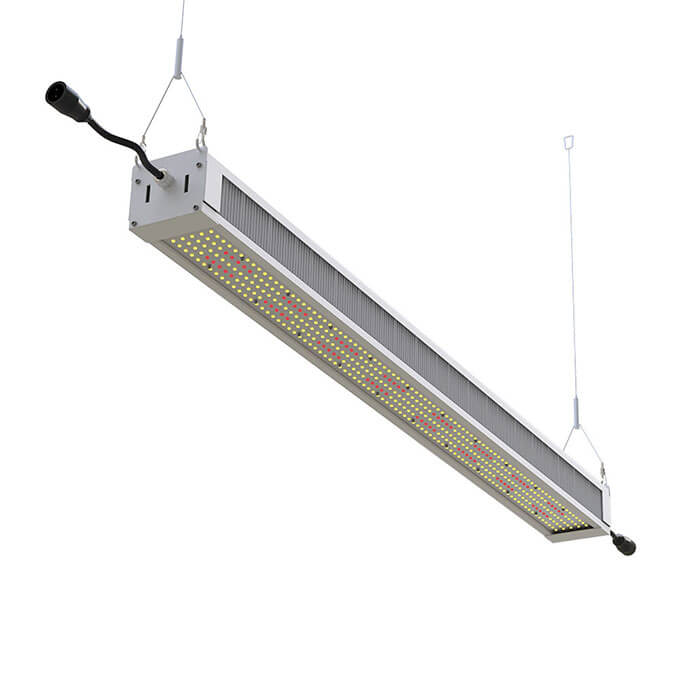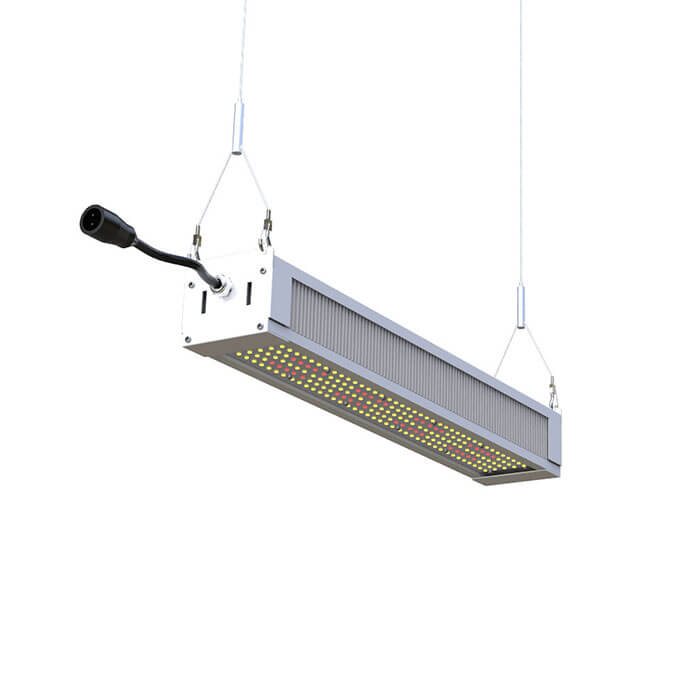Plant LED Grow Lights
LED plant growth lamp is a kind of artificial light source which uses LED (light-emitting diode) as luminous body to meet the lighting conditions of plant photosynthesis. According to the type, it belongs to the third generation of plant lamps and lanterns!
In the absence of sunlight, the lamp can act as sunlight, enabling plants to grow normally or better.
This kind of lamp has strong root, encourage, adjust flowering period, flower color, promote fruit ripening, coloring, improve the taste and quality of the role!
Our LED grow light is an excellent choice for your garden.
Principle
Light environment is one of the indispensable physical and environmental factors for plant growth and development. Controlling plant morphogenesis through light quality regulation is an important technology in the field of protected cultivation. Plant growth lamps are more environmentally friendly and energy efficient. LED plant lamps provide plants with light cooperation, promote plant growth, shorten plant flowering time and improve production. In the modernization construction, it is an indispensable product of crops.
Features
The results show that the wavelength type is rich and coincides with the spectral range of plant photosynthesis and photomorphogenesis; the half width of spectral wave is narrow. Which can be combined to obtain pure monochromatic light and composite spectrum according to the needs; the light of specific wavelength can be concentrated to evenly irradiate the crops; it can not only regulate the flowering and Fruiting of crops, but also control the plant height and plant nutrients; the system has less heat and takes up Small space, can be used in multi-layer cultivation system, low heat load and production space miniaturization.
The characteristics of LED plant lamp are as follows: the wavelength type is rich and coincides with the spectral range formed by plant light synthesis and light morphology; the half width of spectrum wave is narrow, which you can combine to obtain pure monochromatic light and composite spectrum according to the needs; it can concentrate the light of specific wavelength to evenly irradiate crops. Also it can not only regulate the flowering and Fruiting of crops. But also control the plant height and plant nutrient composition; it can also control the plant height and plant nutrients. It can be used in the three-dimensional combination system of multi-layer cultivation, realizing low heat load and miniaturization of production space.
Purpose
Organic planting is a kind of agricultural production system that does not use chemical synthetic fertilizers, pesticides, growth regulators, genetic engineering and ion radiation technology. But follows the natural law, adopts agricultural, physical and biological methods to fertilize the soil, control diseases and insect pests, so as to obtain safe organisms and their products.
In fact, organic farming does not need fertilizer at all, but what can be used is organic fertilizer: farmyard manure, mineral fertilizer, biological bacterial fertilizer, etc. Because of the limitation of this kind of fertilization, there is an effect on the growth cycle of plants. The demand for a large amount of market at present seems to be in short supply. Therefore, shortening the production cycle is one of the methods.
Led plant lamp is helpful to shorten the growth cycle of plants. Mainly because the light source of this lamp is mainly composed of red and blue light sources, and the most sensitive light bands of plants are used. The red light wavelengths are 620-630nm and 640-660nm, and the blue light wavelengths are 450-460nm and 460-470nm.
These light sources make plants produce the best photosynthesis and get the best growth state. Experiments and practical applications show that, in addition to supplementing light for plants in the lack of light. They also promote the differentiation of multiple lateral branches and buds, accelerate the growth of roots, stems and leaves, accelerate the synthesis of carbohydrate and vitamin in plants, and shorten the growth cycle.
With the rapid increase of global demand for organic food, it is an opportunity for more and more producers to develop organic farming.
What is the difference between led plant growth light and ordinary light?
LED (Light Emitting Diode): Use solid semiconductor chips to produce light-emitting materials. When you apply forward voltage to both ends. The carrier fluid in the semiconductor recombines, releasing excess energy and causing photons to emit visible light.
Advantages: High efficiency, pure light color, low energy consumption; durable and long life; safe and environmentally friendly, instant start-up; anti-vibration, cold light source; long-term lamp body surface heat is low and good heat dissipation. Get close to the object without making it anxious. As per the features, you can place the LEDs wither horizontally or vertically above the plan.
Disadvantages: weak brightness and high cost. The main reason is that for plants, photosynthesis the light is different from the light we use for daily lighting. Plant growth requires the use of the sun's light energy to assimilate carbon dioxide (CO2) and water (H2O) to produce organic matter and release oxygen. we call this process photosynthesis.
LED Plant Lights
And only LED lights can meet the above conditions only because LED lights can emit the spectrum needed for plant growth. And plants must have suitable light rays for photosynthesis. The spectrum range has an important impact on plant physiology. Let's take a look at the effects of different wave lines on plants: 280 ~ 315nm: minimal impact on morphology and physiological processes; 315 ~ 400nm: less absorption of chlorophyll, affecting photoperiod effects and preventing stem elongation; 400 ~ 520nm (blue) :The absorption ratio of chlorophyll and carotenoids is the largest, which has the greatest impact on photosynthesis; 520 ~ 610nm (green): the absorption rate of pigment is not high; 610 ~ 720nm (red): the absorption rate of chlorophyll is low, which has the effect on photosynthesis and photoperiod Significant impact; 720 ~ 1000nm: low absorption rate, stimulate cell elongation, affect flowering and seed germination> 1000nm: converted into heat.
From the above data, light of different wavelengths has different effects on photosynthesis of plants. The light required for photosynthesis of plants has a wavelength of about 400 ~ 720nm. Light of 400 ~ 520nm (blue) and 610 ~ 720nm (red) contribute the most to photosynthesis. The light of 520 ~ 610nm (green) has a low absorption rate by plant pigments.
Why LED PLant Light?
According to the above principles, plant lights are basically made into three forms of red and blue, full blue, and full red. To provide light with two wavelengths of red and blue, covering the wavelength range required for photosynthesis. In terms of visual effects, the red and blue plant lights are pink. When LED plant light supplements light to plants, the general power is lower than 50w LED plant light supplement light. For different plants, the height from the main leaf surface of the plant should be 0.2 ~ 0.8 meters; power higher than 50w LED plant light supplement.
For different plants, the lamp should be 0.5 to 1.5 meters away from the main leaf surface of the plant when in use. In summary, LED lamps are the most suitable lamps for plants to supplement light. Our LED Grow light is highly effective for plant growth and development.







